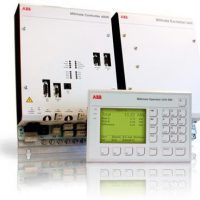Overview
The load cell output signal is calibrated for full interchangeability between load cells of the same type and size. The various types and the wide load range cover practically all conceivable roll force measurement applications
Application
To achieve the best possible measurement results, certain basic rules must be observed during the installation of the load cell:
The entire force must pass through the load cell.
The force must be measured as close to the source of the force (the roll gap) as possible.
The load cells must be protected to the greatest possible extent from large bending, lateral and torsional forces.
Under the mill screw
For installation under the mill screw, the load cell can be combined with thrust bearings and pressure plates into a package attached to the mill screw. This arrangement results in good force distribution, simple, inexpensive installation and easy servicing. In addition, there is no need to machine any surfaces on the roll stand. However, this arrangement does take up space in the roll window.
Under the lower back-up roll bearing
There must be a sufficiently large flat surface on the lower part of the roll stand to allow the installation of the load cell under the lower back-up roll bearing. This arrangement has the advantage that there is no need to pay particular attention to the load cell during roll change.
See also our offer regarding Load Cell Packages to the right.
Annular load cell between the mill nut and the mill stand
This version makes measurement possible even if the space under the mill screw and under the lower back-up roll bearing is insufficient. This arrangement also has the advantage that there is no need to pay particular attention to the load cell during roll changing, and it is well protected.
Pressductor Technology
ABB’s well-known Pressductor® Technology is a measurement principle based on the magnetoelastic effect – the magnetic properties of a material are influenced by the mechanical force applied to it.
When exposed to mechanical force, ABB’s Pressductor transducer produces measurement signals as a result of changes in magnetic fields. (Move your mouse over the illustration to see these changes.) Because these signals are not contingent upon physical movement or deformation, the load cells combine sensitivity with extraordinary tolerance to overloads and virtually no built-in limit to the number of load cycles.
The ABB Pressductor transducers produces high-power, low-impedance AC signals that are very resistant to electrical interference and earth faults.
ABB’s Pressductor transducer stands for unbeatable load cell performance, thanks to its unique combination of accuracy, overload capacity and ability to withstand harsh environments. By using this technology you will achieve higher quality and reliability, especially under demanding conditions.







Reviews
There are no reviews yet.